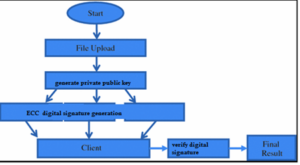Energy is one of the most important resources available to man and it is necessary to keep a check on the growing need for energy day by day.
The Issue of the availability of Energy is getting prominent these days. So to analyze the consumption of energy and production of Energy via available Energy Resources is important.
The project describes the consumption of energy resources of all states of India in the last few years with respect to the population of India state-wise and predicts the future energy requirements for every state.
INTRODUCTION
India is a growing economic superpower. At this point in time, we are sitting at the tip of our economic explosion. The vast reserves of resources in all factors of production have earned us the title of The Land of Potential. But this comes at a cost, with this growth potential comes the need to satisfy the potential through the generation of energy.
To meet this challenge of growing energy is very important for India and it is even more important to predict the future requirements of energy in our country.
If we are able to predict the energy required in the future it will boost the potential of the country and increase the overall growth in every field
Background and Basics:
The programming language Python is very useful for the analysis of data in every field.
Python has been used to show the analysis of data in a diagrammatical format like a Pie Chart, Bar Chart, and Multiple Bar Chart.
It also shows a map of India with respect to the intensity of Energy Consumption as well as the Population of India state-wise. By using Machine Learning.
We have predicted the requirement of the amount of energy for every state using The Linear Regression Machine Learning Algorithm. It uses two parameters on the outcome and one on which the outcome depends
The population has been used as a parameter on which energy depends
Future Use
This program gives a clear idea about the energy requirement in the Future.
Software and Hardware Requirements
Details of software
Python
Anaconda (Spyder) IDE
Required Python Libraries:
Numpy
Pandas
Matplotlib
Tkinter
PIL
Mpl_toolkits.basemapDetails of hardware
Details of Hardware
Working PC
Methodology
The SUBMIT button on the GUI checks the availability of state i.e.it checks the correct state.
The PIE Chart on the GUI plots the energy resource required percentage-wise.
The BAR Chart on the GUI plots the energy resource required percentage-wise.
Flow of Project
Our project takes a dataset of the population from the year 2013 to 2017 and energy requirements in India per state from the year 2013 to 2016.
The data from every set from the years 2013-16 has been used in order to train the machine using linear Regression and data from 2017 for the population has been used in order to test the model to predict the future requirement of energy.
The energy requirements predicted as well as actually have been represented using the map of India i.e. greater the intensity on the map higher the energy required for that state, bar chart, and Pie chart.
Results and Discussion
Pie Chart of Energy Resources of Maharashtra Year 2015
Resource-wise Production of energy
Map of India according to energy consumption
Conclusion
We have used python to show the analysis of data in a diagrammatical format like a Pie Chart, Bar Chart, and Multiple Bar Chart.
It also shows a map of India with respect to the intensity of Energy Consumption as well as the Population of India state-wise.
By using Machine Learning, we have predicted the requirement of the amount of energy in the specified year for each state in India.
Technologies used in the project are Python, Machine learning, and Data Analysis.
This program gives a clear idea about the energy requirement in the Future.

